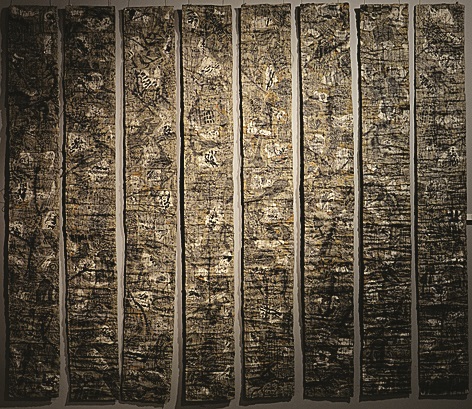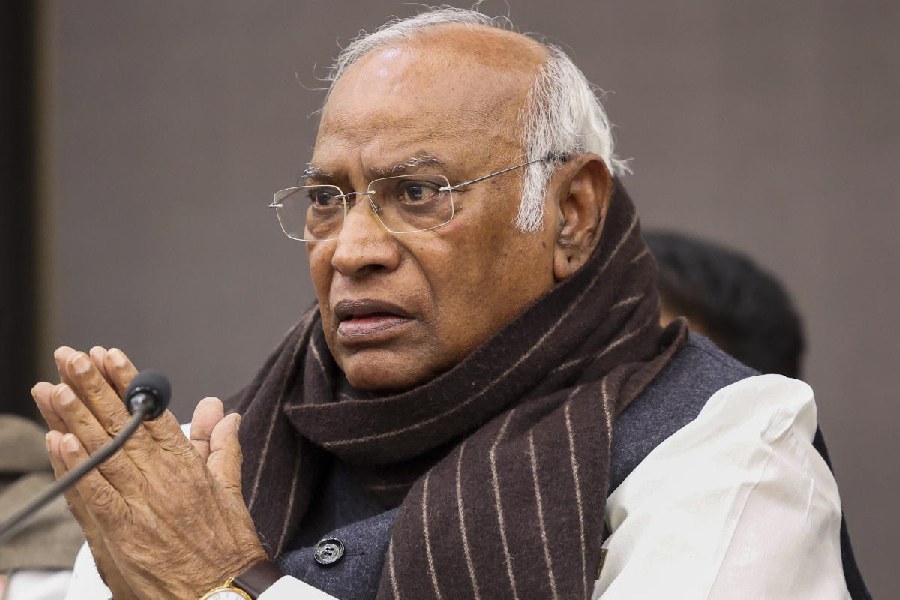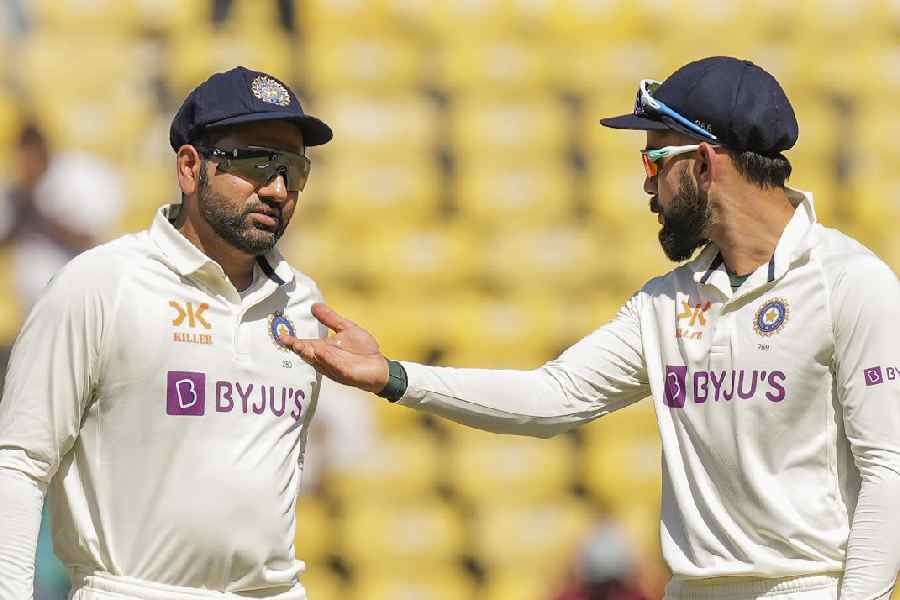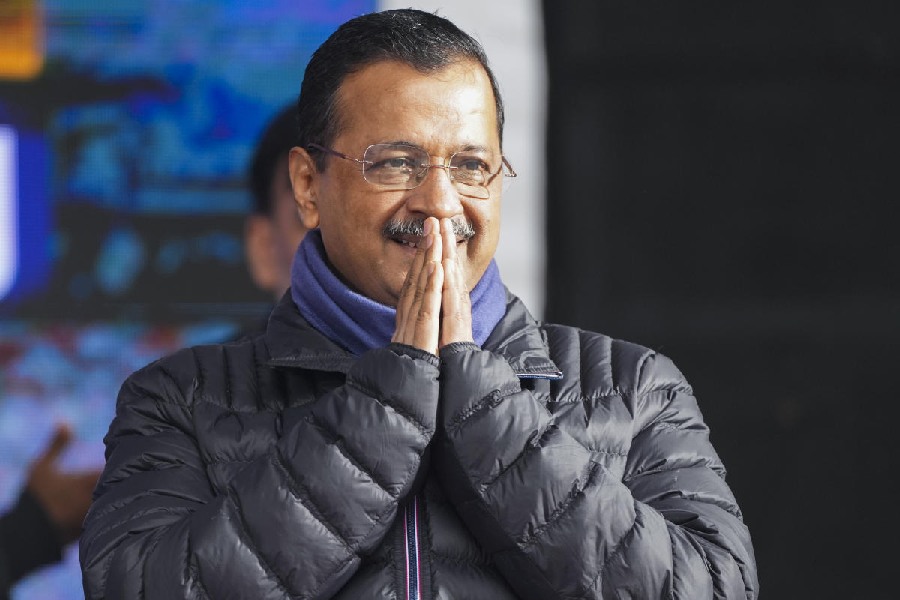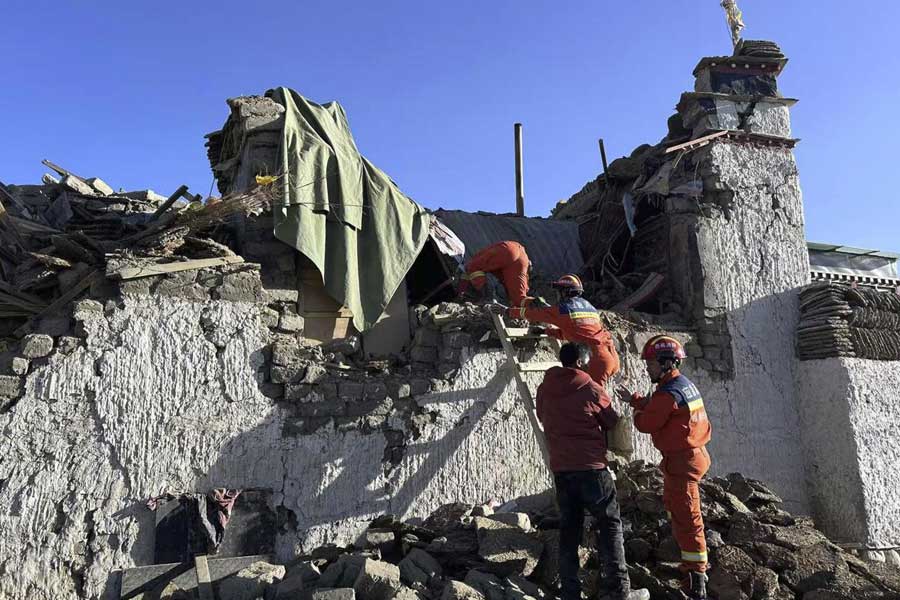On a hefty, handsome wooden slab hangs an antique bronze lock, replete with premonitions that recall dark, medieval myths. This sculpture by Barun Pramanick — seen at the annual show of RAD (Reflections of Another Day) at Birla Academy in early March — acquires an unintended significance during the lockdown. The same with Pabitra Ganguly’s life-size locked door, with a ceremonial fumigation painted at the bottom.
The pestilence wasn’t monstrous then, but darkness permeates life at all times. As it does Subrata Saha’s bleak landscape with its intimations of a rootless despair. For Debasish Sarkar, however, despair is rooted in the stark contrasts of hunger and waste he portrays. The tone may be of sentimental manifesto rhetoric going back to the Bengal famine artists, but the conscience-shaming image reminds you of the ubiquitous darkness that remains invisible to the well-fed. Tapas Majumdar uses the same palette associated with a contemporary artist but that doesn’t minimize the sinister edge in his woodcut and acrylic with rows of (oil?) pipes and black clouds. As though toxic smoke from Chandra Bhattacharjee’s suspended White Cube — an understated acrylic of uneasy portents — had gathered there. And in Manash Saha’s vertical naturescape tapestry, with blackened layers and shrivelled roots lying beneath the soiled colours on top.
Debajit Chakraborty’s cascade of cloth with paint and paper cuttings is like an aged parchment that, while symbolizing dry river beds, is a sharp indictment of civilization. Similarly for Puspen Roy’s testament of pollution. Biswa Basu’s assemblage echoes Rauschenberg as it simmers with rebelliousness. If there’s alarm in Rathin Kanji’s work, Biswajit Mukherjee’s landscapes are sombre in tone. What’s most noticeable in Asim Paul’s installation is the sturdy elegance of his Klinesque, calligraphic strokes.
A satiric squint marks the works of Jayanta Naskar, Dipankar Karmakar and Parth Pratim Roy. Rathin Dey’s installation and Swapan Das’s etching hold the eye. But the two works that stand out are Sudhangsu Bandyopadhyay’s spare, subtly textured acrylic and Ranajit Adhikary’s vertical scrolls. Layered and crumpled into a palimpsest of little motifs, sketches and scribbles, it’s like chattering, garbled crosstalk. Is that what The Urbane [sic] Dreams have become?

